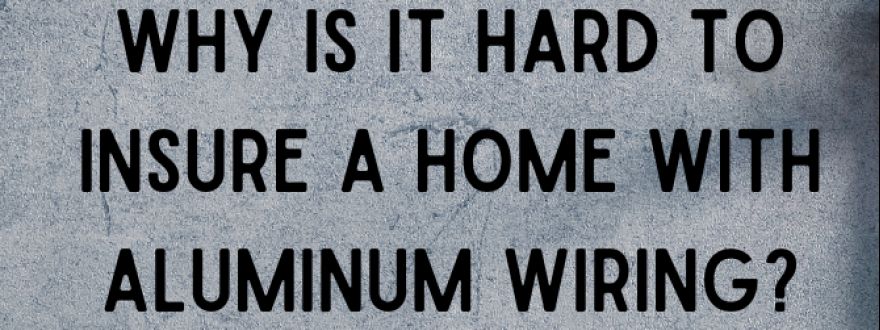
Several homes built prior to 1980 have electrical wiring that is made of either solid strand or multi-strand aluminum wiring. Aluminum is an excellent conductor of heat and electricity and is used in electrical components every day. Your cell phone probably has a fair amount of aluminum in it. Aluminum has many benefits other than being a great conductor of electricity. It is very lightweight, resists sustained corrosion, is said to be non-toxic (it's actually found in antiperspirant), and is a more efficient electrical conductor than copper by weight.
Since aluminum wiring has been used since the mid-1960s why is it so hard to find an insurance company willing to insure a home that has this type of wiring?
The primary concern with aluminum wiring is that it can be a fire hazard. Aluminum is very soft and can actually be machined using woodworking tools because of how soft it is. Its pliability along with its thermal expansion makes it easy for the material to get small kinks and voids over time which can get incredibly hot when current goes through it. Before plastics were readily available, these wires were usually coated in a treated cloth material which could also catch fire at high temperatures. Many homes where this aluminum wiring exists are frame homes which present a higher likelihood of fire as well.
If you have aluminum wiring in your home, what can you do?
There are many ways to reduce the chance of fire with aluminum wiring. The first and most obvious choice is to hire a licensed, professional electrician who can completely remove the outdated wiring and bring it up to current code. This process is the most costly of the solutions but is by far the best way to not only make sure the aluminum wiring is no longer an issue but that all of the wiring in the home is in good and proper working order.
If time and budget are limited, like when a home needs to pass inspection to be sold, there is another method that may help reduce the aluminum wiring exposure. The most common fail points for aluminum wiring will be at the breaker box, outlet, junction box, and switch where the wires are twisted and connected. You can hire a licensed, professional electrician who can install Alumiconn or Copalum connectors at every single one of these weak points. These special connectors work in the same way with the goal being to safely hand off the electrical current from the aluminum wire to a copper connection.
According to the guidelines of Citizens, the state-run homeowners insurance carrier in Florida, a home may be eligible for insurance if it meets the following criteria:
- The home has been rewired completely with copper wiring
- All aluminum-to-copper connections (e.g., light fixtures, fan fixtures, outlets and switches) have been repaired via the COPALUM® crimp method
- All aluminum-to-copper connections (e.g., light fixtures, fan fixtures, outlets and switches) have been repaired via the AlumiConn® connector method
Please check with an insurance agent before proceeding with costly repairs to ensure you home will meet the guidelines of the carrier. If you are interested in working with us to insure your home, you can get started here: https://secureformsolutions.com/form/wellsmac.com/homeowners







